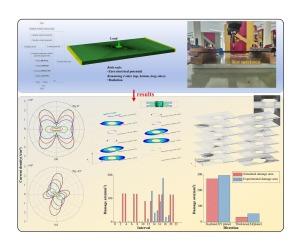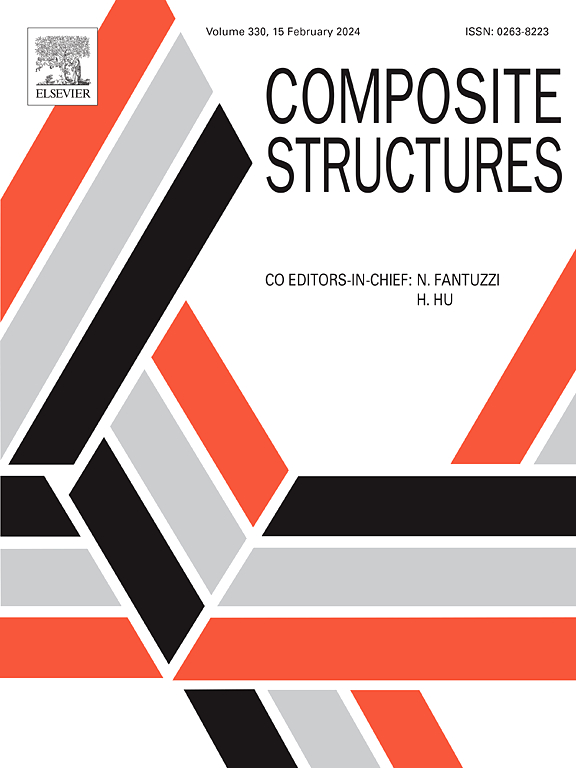Lightning damage analysis of composite bolted joint structures based on thermal-electrical-structural simulation
IF 6.3
2区 材料科学
Q1 MATERIALS SCIENCE, COMPOSITES
引用次数: 0
Abstract
To analyze the impact of connection behavior on lightning-induced ablation damage in composite bolted joints, this paper analyzes contact properties based on thermoelectric characteristics and develops a lightning ablation damage model for composite interference joint structures. A preliminary analysis of the electrothermal conduction process in the interference-fit composite joints clarifies the influence of connection behavior on lightning damage. The results indicate that a skin effect occurs near the fastener-to-CFRP interface, and both Joule heating and conductive heat significantly affect the temperature distribution in the composite bolted joint structure. A lightning current impact test was also conducted for validation and comparison. Quantitative comparisons show that the predicted in-plane damage aligns well with the experimental results, with an error of 7.37%, while the difference in thickness direction damage is more significant, with an error of 40.02%. Furthermore, the analysis of ablation damage characteristics reveals that the most severe damage occurs in the lower-middle region of the CFRP thickness due to the combined effects of interference damage and bolt preload, while damage in other areas is suppressed.

基于热-电-结构模拟的复合螺栓连接结构雷击损伤分析
为了分析连接行为对复合材料螺栓连接中雷电诱发的烧蚀损伤的影响,本文基于热电特性分析了接触特性,并建立了复合材料过盈连接结构的雷电烧蚀损伤模型。通过初步分析过盈配合复合材料接头中的电热传导过程,阐明了连接行为对雷击损伤的影响。结果表明,紧固件-CFRP 接口附近会产生集肤效应,焦耳热和传导热都会显著影响复合材料螺栓连接结构中的温度分布。此外,还进行了雷电流冲击试验进行验证和比较。定量比较结果表明,平面内损伤的预测结果与实验结果吻合较好,误差为 7.37%,而厚度方向损伤的差异较大,误差为 40.02%。此外,对烧蚀损伤特征的分析表明,由于干涉损伤和螺栓预紧力的共同作用,最严重的损伤发生在 CFRP 厚度的中下部区域,而其他区域的损伤受到抑制。
本文章由计算机程序翻译,如有差异,请以英文原文为准。
求助全文
约1分钟内获得全文
求助全文
来源期刊

Composite Structures
工程技术-材料科学:复合
CiteScore
12.00
自引率
12.70%
发文量
1246
审稿时长
78 days
期刊介绍:
The past few decades have seen outstanding advances in the use of composite materials in structural applications. There can be little doubt that, within engineering circles, composites have revolutionised traditional design concepts and made possible an unparalleled range of new and exciting possibilities as viable materials for construction. Composite Structures, an International Journal, disseminates knowledge between users, manufacturers, designers and researchers involved in structures or structural components manufactured using composite materials.
The journal publishes papers which contribute to knowledge in the use of composite materials in engineering structures. Papers deal with design, research and development studies, experimental investigations, theoretical analysis and fabrication techniques relevant to the application of composites in load-bearing components for assemblies, ranging from individual components such as plates and shells to complete composite structures.
 求助内容:
求助内容: 应助结果提醒方式:
应助结果提醒方式:


